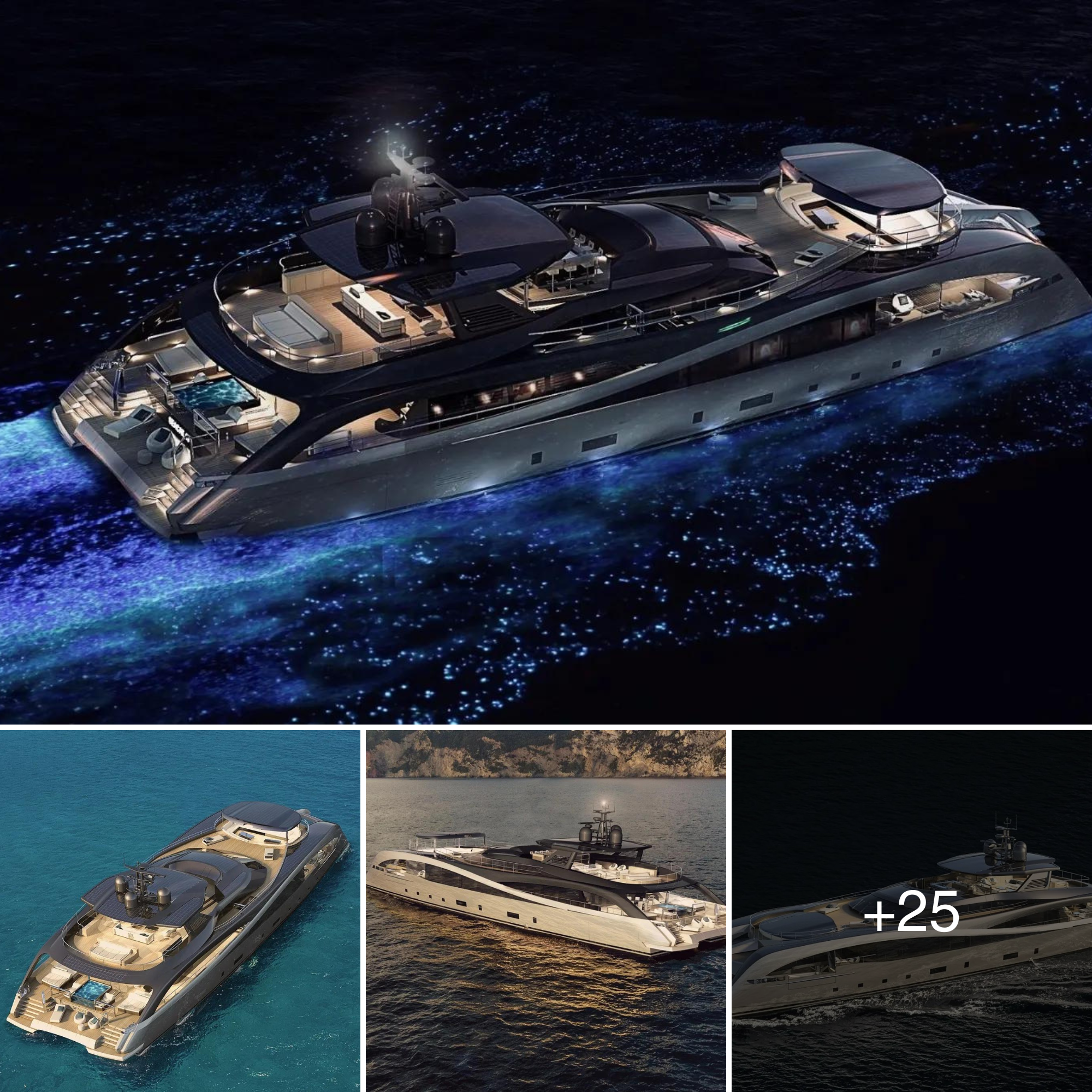
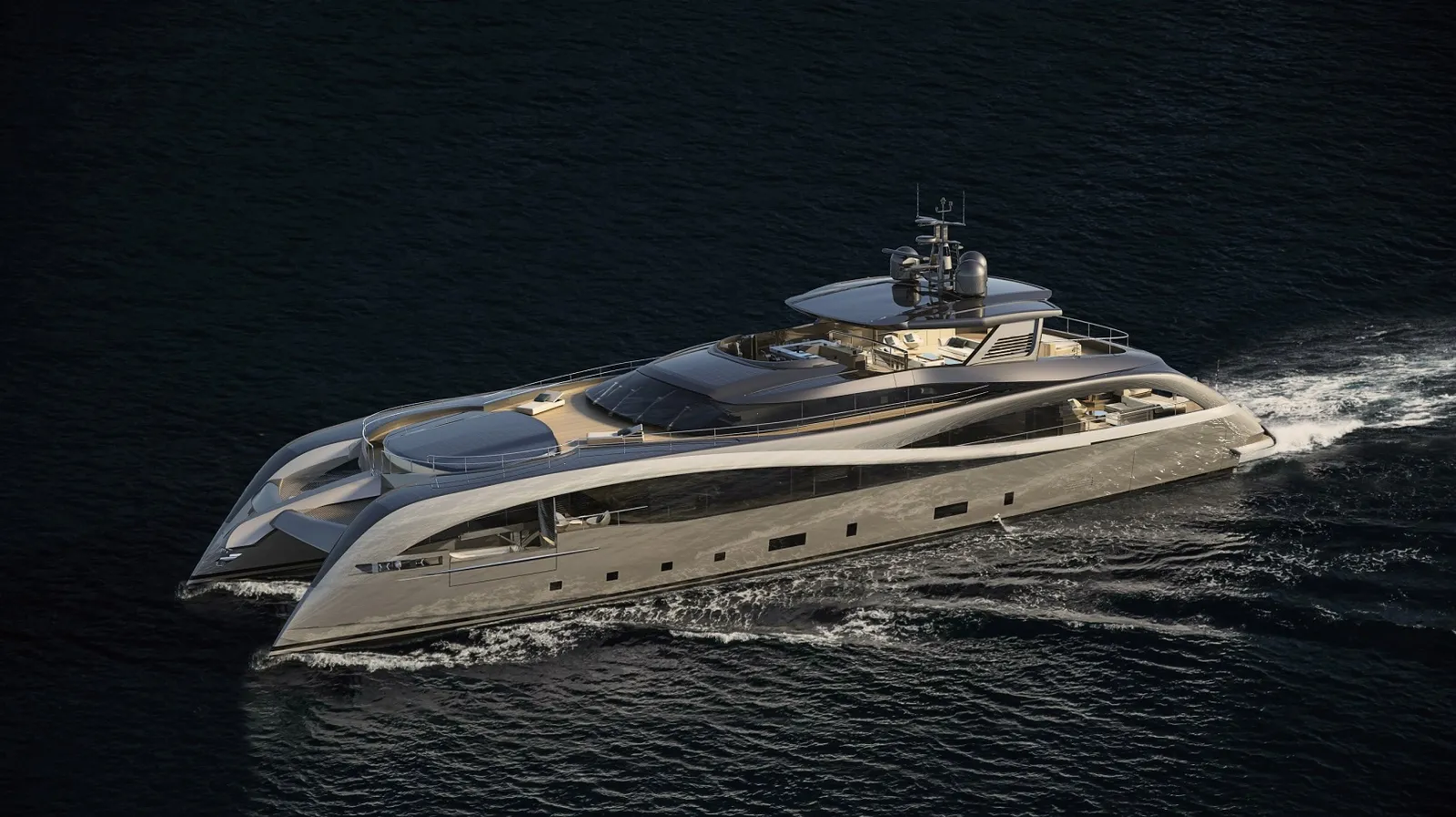
The Italian shipyard Rossinavi has announced that its Sea Cat concept, which was unveiled during Miami Design Week in 2021, is currently being constructed.
The 42.75-metre Sea Cat, which was announced on the eve of the Monaco Yacht Show, is the first project presented by Fulvio de Simoni Yacht Design and Catana Yachts since Aurora in 2017. This is also the shipyard’s first multihull undertaking.
Federico Rossi, chief operating officer of Rossinavi, stated, “The intention was to create a connection between nature, electricity, and futurisim.”

Solar energy is integral to the design of the Sea Cat, which will feature four modes of operation. The first is for day trips, where the catamaran can operate in full-electric mode for the duration of the voyage. The second is optimised for multi-day cruises with evenings spent at anchor, where the Sea Cat can operate in full-electric mode for 90 percent of the time.
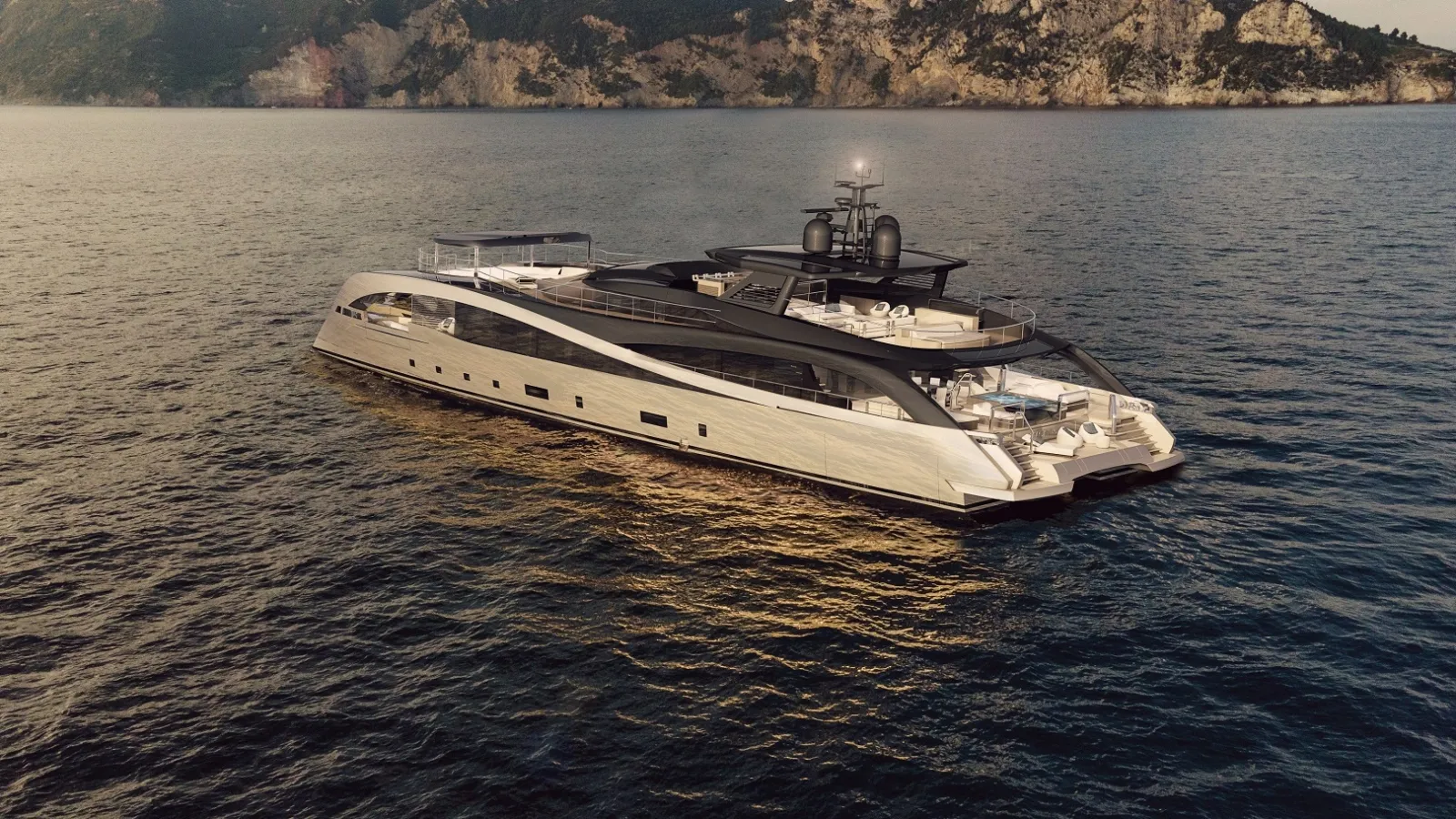
For transatlantic crossings, the yacht can spend 80 per cent of its time in full-electric mode, where CO2 emissions are reduced by approximately 40 tonnes compared to a traditional yacht of the same size, according to the yard.
The fourth and final mode of operation, dubbed hibernation, enables the catamaran to be self-sufficient in port due to solar panels and even donate excess energy to a marina or private property.
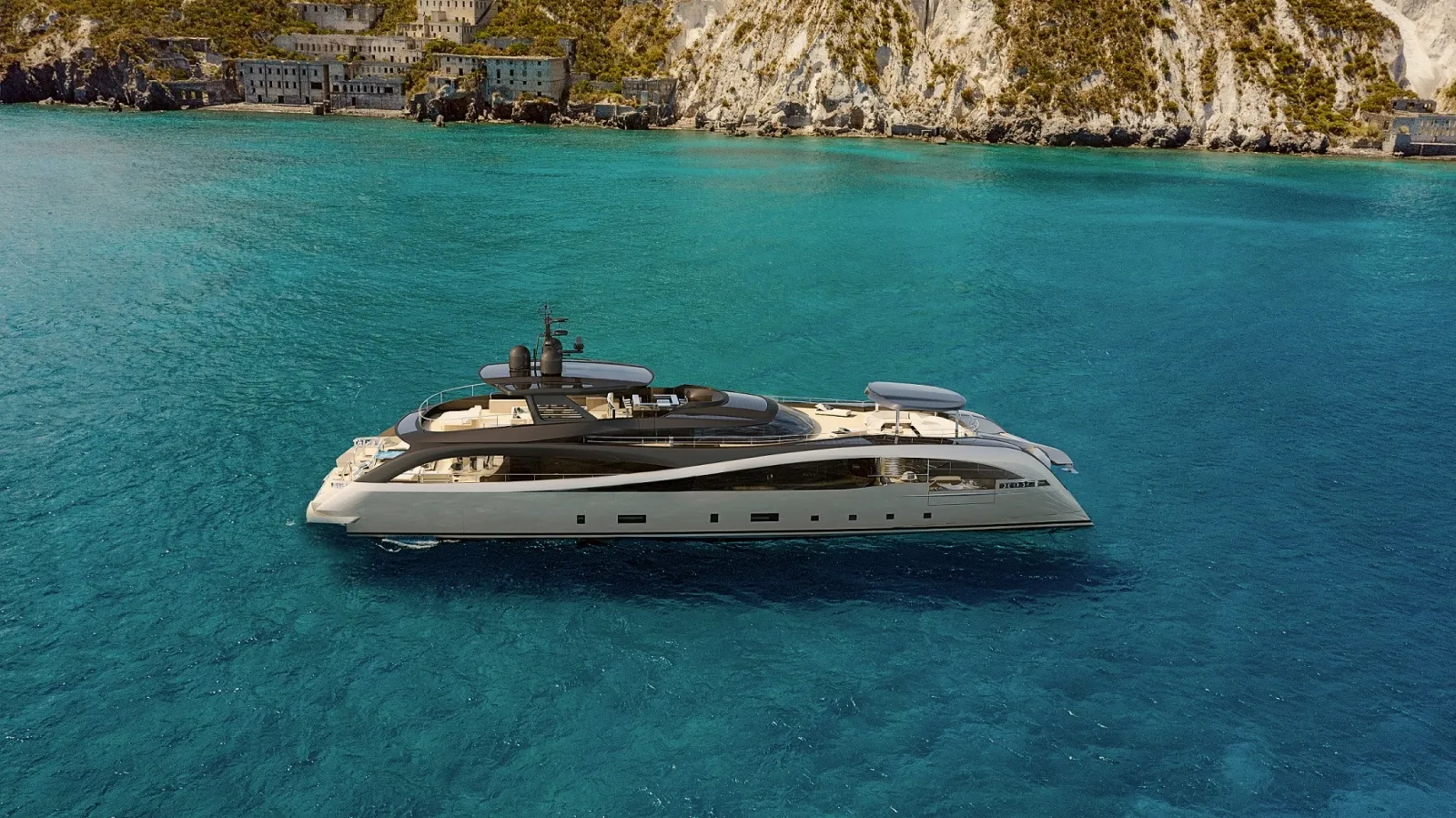
Meyer Davis, a New York-based design firm, will construct an interior that “complements the cutting-edge yacht by bringing relaxed luxury and eco-friendly design to the forefront,” according to the shipyard. The interior design will be inspired by nature, specifically the sun, the sea, and the dunes.
Notable features include a swimming pool in the cockpit of the main deck and a large forward saloon with a Jacuzzi, fire pits, and a theatre. There are four cabins in the hulls that can accommodate a maximum of 10 passengers.
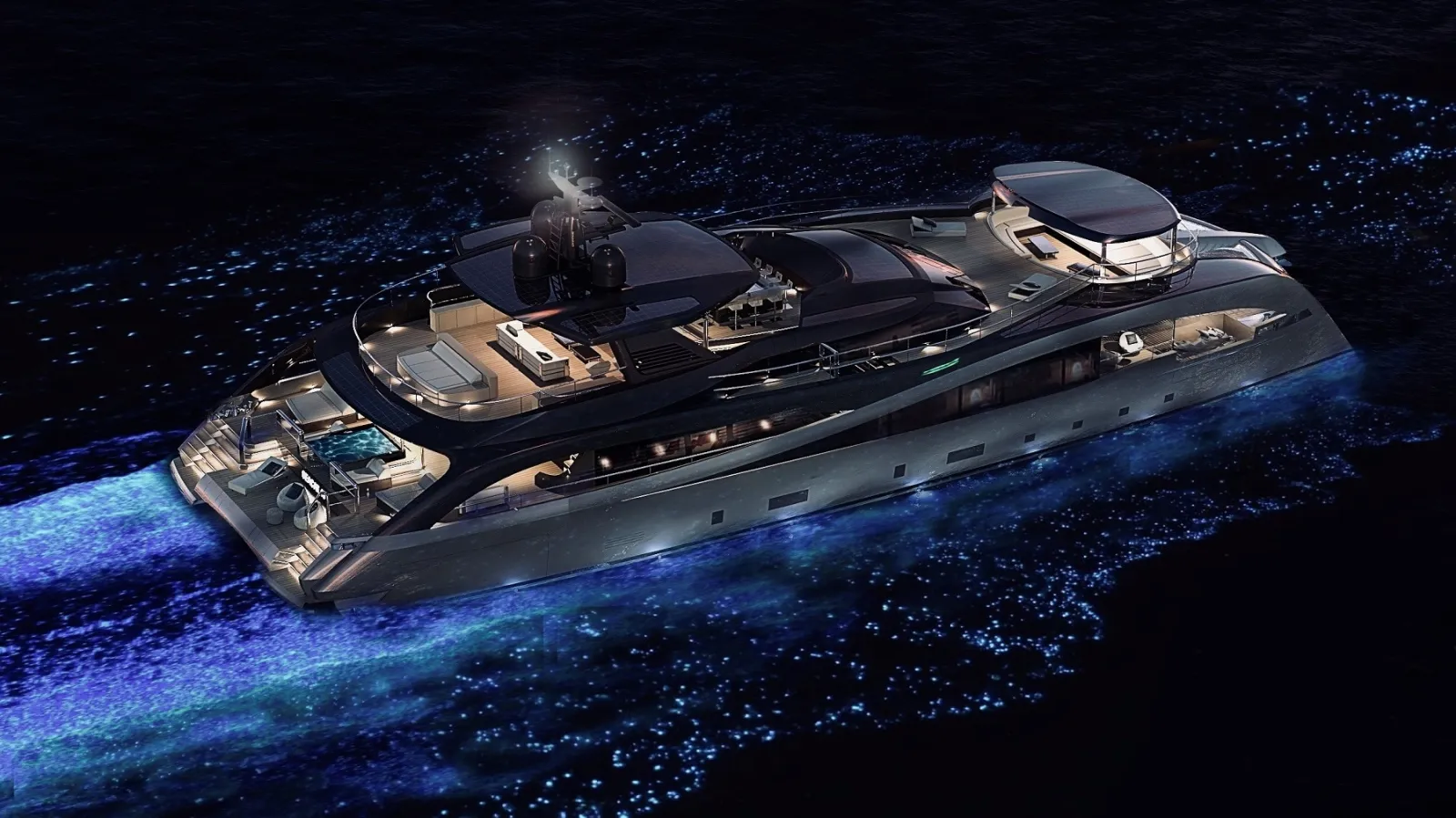
With a beam of 13.75 metres and a maximum draught of two metres, the Sea Cat will fall under the 500GT limit.
Rossi added, “The new generation of yachts is motivated by a sense of duty.” I wanted to set an objective beyond the obstacle of creating avant-garde products that better express our conception of the cruising experience, while moving in an increasingly sustainable direction.
